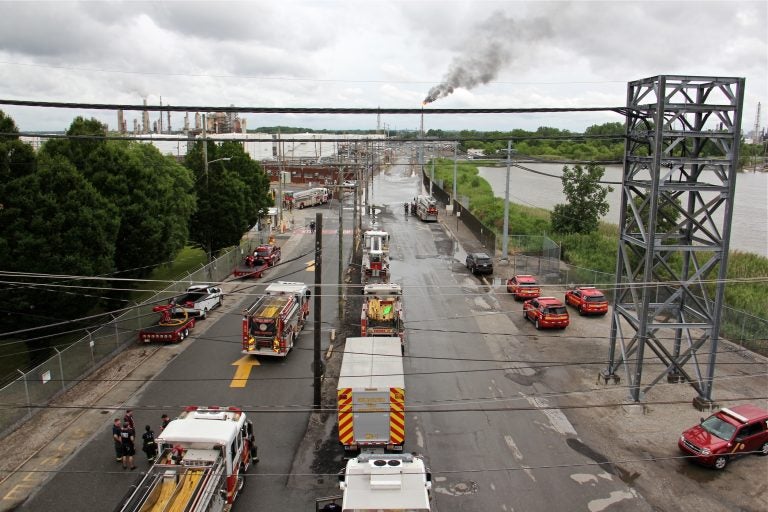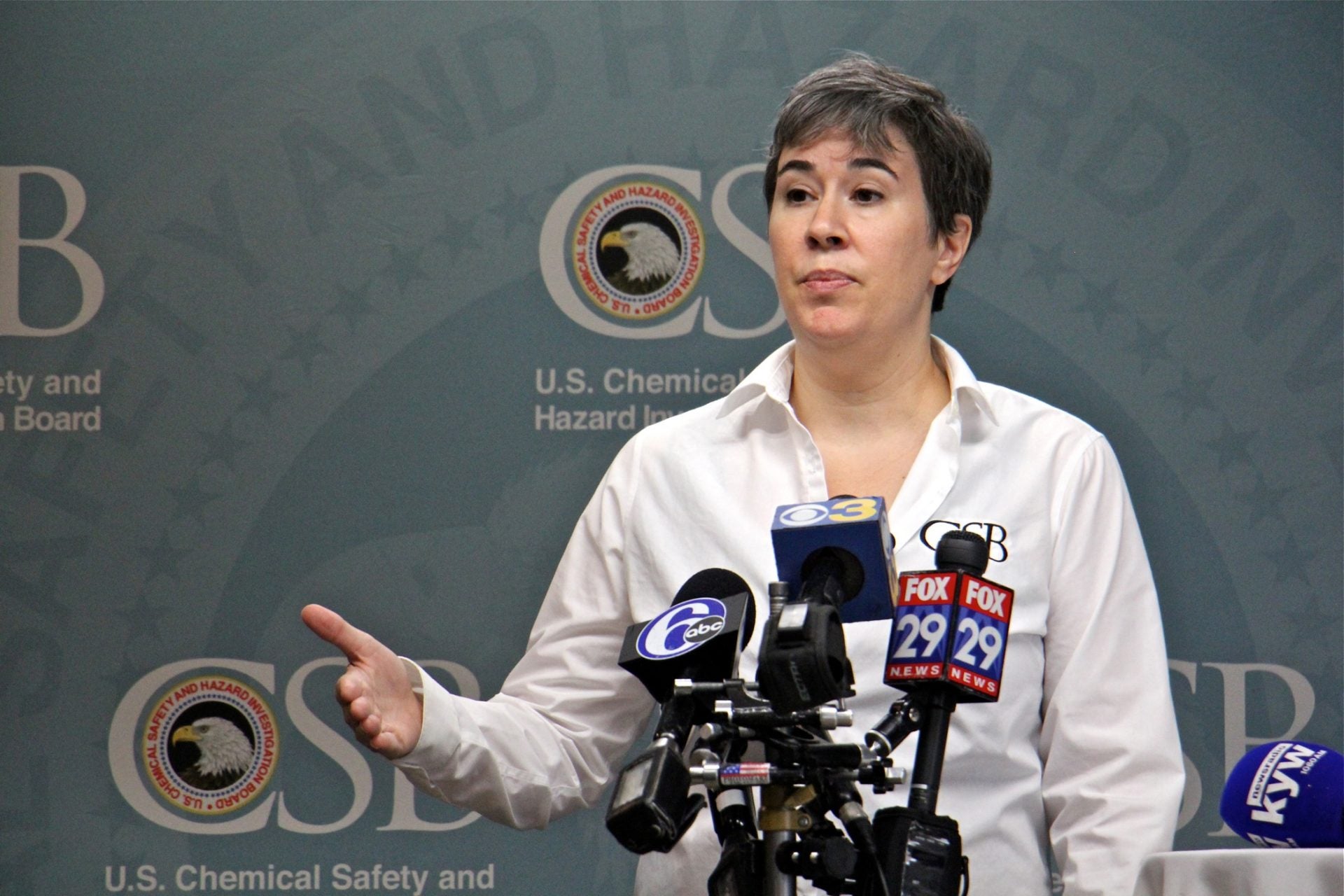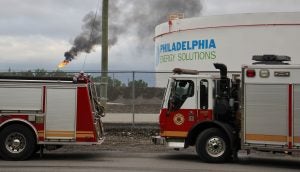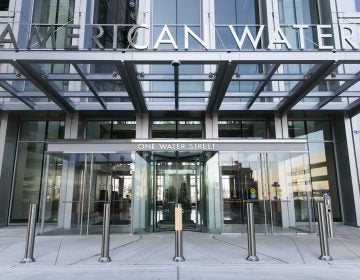Investigation of the explosion and fire at PES delayed by unsafe conditions
Investigators from several agencies say the site of the Philadelphia Energy Solutions refinery explosion and fire remains unsafe.

In this file photo, Philadelphia firefighters gather at the entrance to Philadelphia Energy Solutions Refinery, while a large flare burns off fuel to prevent it from feeding the massive fire at the refinery, Friday, June 21, 2019. (Emma Lee/WHYY, file)
This article originally appeared on StateImpact.
—
Investigators from several agencies say the site of the Philadelphia Energy Solutions refinery explosion and fire remains unsafe.
Kristen Kulinowski, interim executive of the Chemical Safety Board, said the area is not structurally sound and is off-limits. The CSB is an independent federal agency investigating why and how the explosion happened.
Kulinowski says she’s been told the area is “full of twisted metal and debris scattered” at the site. She says vapor was released early Friday morning, followed by several explosions. The ignition source remains unknown.

“There’s an adage in the industry that a flammable vapor outside of its containment will find an ignition source,” she said. “You can’t control an ignition source. So you have to control the vapors.”
She said anything could have touched it off, including other equipment or a vehicle.
The CSB has investigated a dozen incidents at refineries in the last 20 years.
“Refining is a high-hazard industry,” Kulinowski said. “These hydrocarbons are flammable and explosive and that’s why the safety management systems are in place to help prevent their unintentional release.”
Issues surrounding the use of the highly toxic hydrogen fluoride will be part of the investigation. It was not released, but if it had been, it could have traveled into surrounding neighborhoods and caused serious injuries and even death.
The CSB will also be looking at the long history of the facility as part of its investigation, which could take up to 18 months. The agency will issue recommendations intended to prevent future explosions from happening.
“We will look at the technical, human and managerial factors that led to the incident,” she said.
Several weeks prior to the explosion, the agency sent a letter to EPA recommending an examination of alternatives to hydrogen fluoride. Refiners currently use either hydrogen fluoride or sulfuric acid as catalysts in the process of turning crude oil into gasoline. The EPA has yet to respond.
WHYY is your source for fact-based, in-depth journalism and information. As a nonprofit organization, we rely on financial support from readers like you. Please give today.






